It might seem antithetical to common practice that lighting would be used to announce, indeed summarize, the competence, skills, and technological precision of a private ophthalmology clinic. But, in their redesign for a lobby at the Institute of Ocular Microsurgery (IMO) in Madrid, local firm gon architects employed a strategy of illumination for the street-level reception-cum-waiting area of the facility’s 2010 building that is strong yet surprisingly tranquil. Rather than dazzling patients as they enter, the architects’ scheme manages to welcome them with visual comfort. This is because, once inside, one no longer sees the light, one senses it.
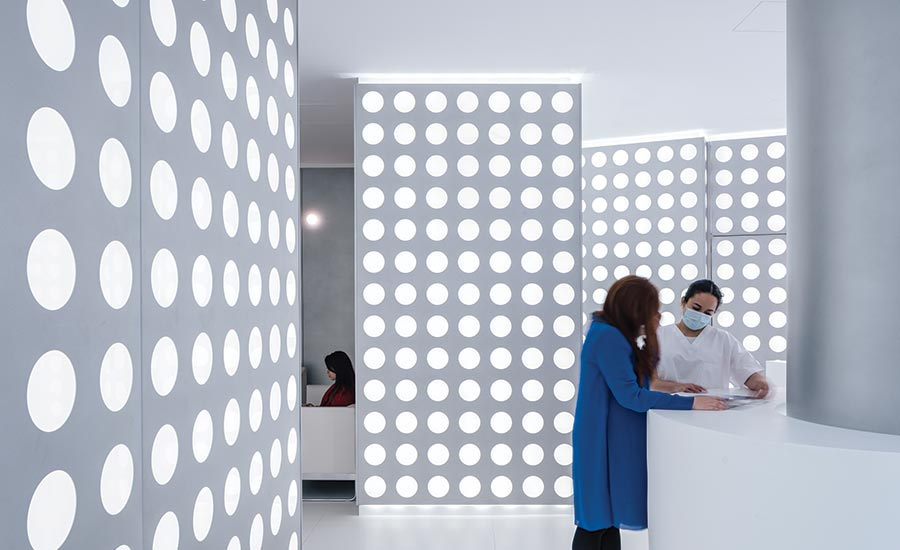
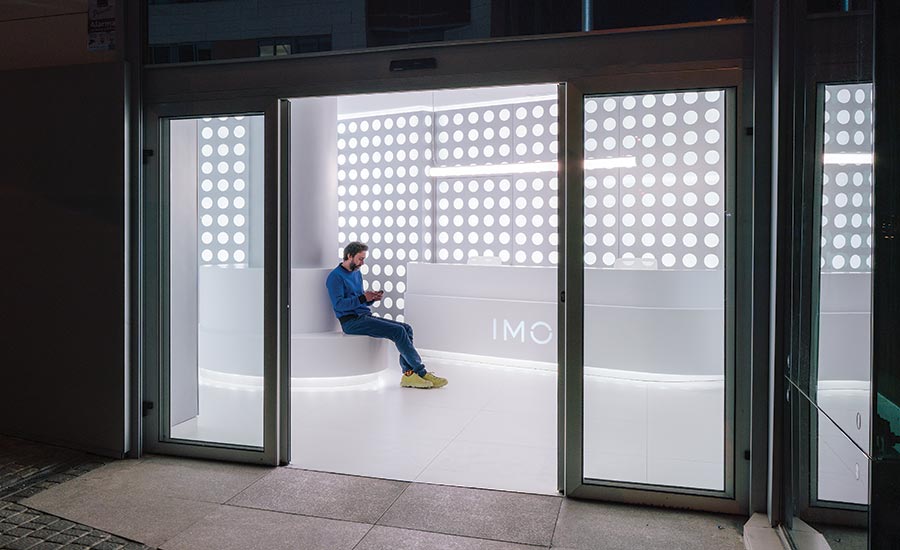
A central column anchors a circular solid-surface bench that doubles as a counter-height work surface. Photo © Imagen Subliminal (Miguel de Guzmán + Rocío Romero), click to enlarge.
Dubbed OCULUM (“eye” in Latin), the newly remodeled lobby is not just a space but an architectural device featuring a wraparound wall or enclosure system built with 17 metallic light boxes that rise from floor to ceiling. Referencing Jean Prouve’s Maisons Tropicales (1949–51)—a trio of Modernist prefabricated aluminum-and-steel prototype houses with glazed portholes—this assembly functions as a lantern and comprises 1,184 methacrylate lenses that cover a series of circular holes die-cut from the thin aluminum panels cladding the light boxes around the room. Inside these modules, which are lacquered in a tactile, textured gray finish, a hidden circuit of tunable-white LEDs provides a soft, dimmed light that magnifies the space and makes it feel both expansive and calm. This effect is underscored by the discreet glow of a continuous LED ribbon that frames the walls from within coves around the floor and ceiling, so that they appear to float. A white floor, made of 4-foot-square porcelain tiles, and a white ceiling add to the brightness and fluidity of the space, which is never broken but rather reinforced by the spare, pristine solid-surface reception desk and bench. The latter conceals a column facing the entrance and morphs into a high table as it sweeps around to the back, adding sinuousity.
Designed in collaboration with the lighting designers at Oliva Iluminación and fabricated by blacksmith Alberto Iglesias, the panel structures establish a homogeneous state at a Unified Glare Rating (UGR) that never exceeds 19, a level approved by the doctors at the clinic. The color temperature ranges between 3000K and 6000K and is controlled to follow the patterns of the sun. The result is a system that fluctuates gently, reproducing the quality of the daylight in accordance with the seasons and hour to accord with the circadian rhythm of building occupants.
Despite the clear reference to Prouvé found in the pattern of the paneled light walls, this bold project is also about the invisible—it tells a story of inventiveness that relates manufacturing to craft, as the Modern movement did. The lobby seems extremely technological, and yet it is handcrafted. No light source is clearly visible, but what you perceive is welcoming, soothing light.
Click diagram to enlarge
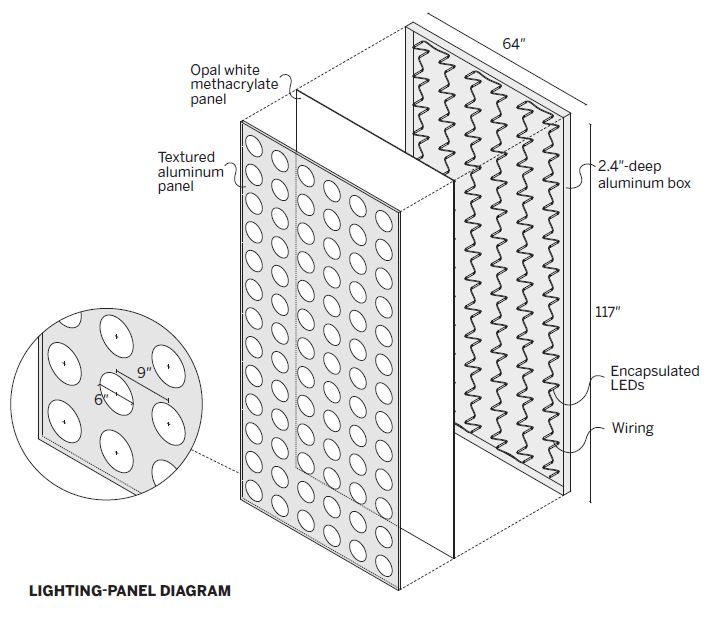
Credits
Architect:
gon architects — Gonzalo Pardo, founding principal; Carol Pierina, María Cecilia Cordero, design team; Iván Rando, drawings
Engineer:
13 Ingenieros (installations)
General Contractor:
Ancordarq
Consultants:
Oliva Iluminación (lighting design)
Client:
Institute of Microcirugía Ocular
Owner:
MIRANZA Group
Size:
1,100 square feet
Cost:
$141,000
Completion Date:
December 2020
Sources
Lighting:
XAL (pendant); JUNG (controls)
Tile:
Porcelanosa (floor and wall)
Solid surface:
Abalit Elementos Moldeados
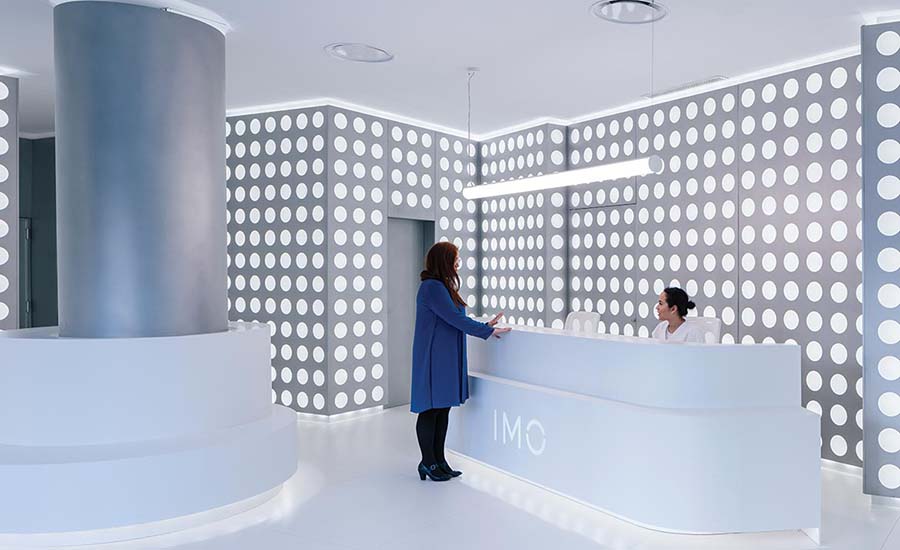

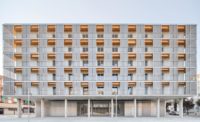
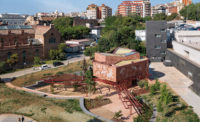
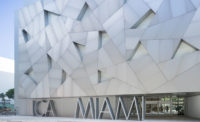
Post a comment to this article
Report Abusive Comment